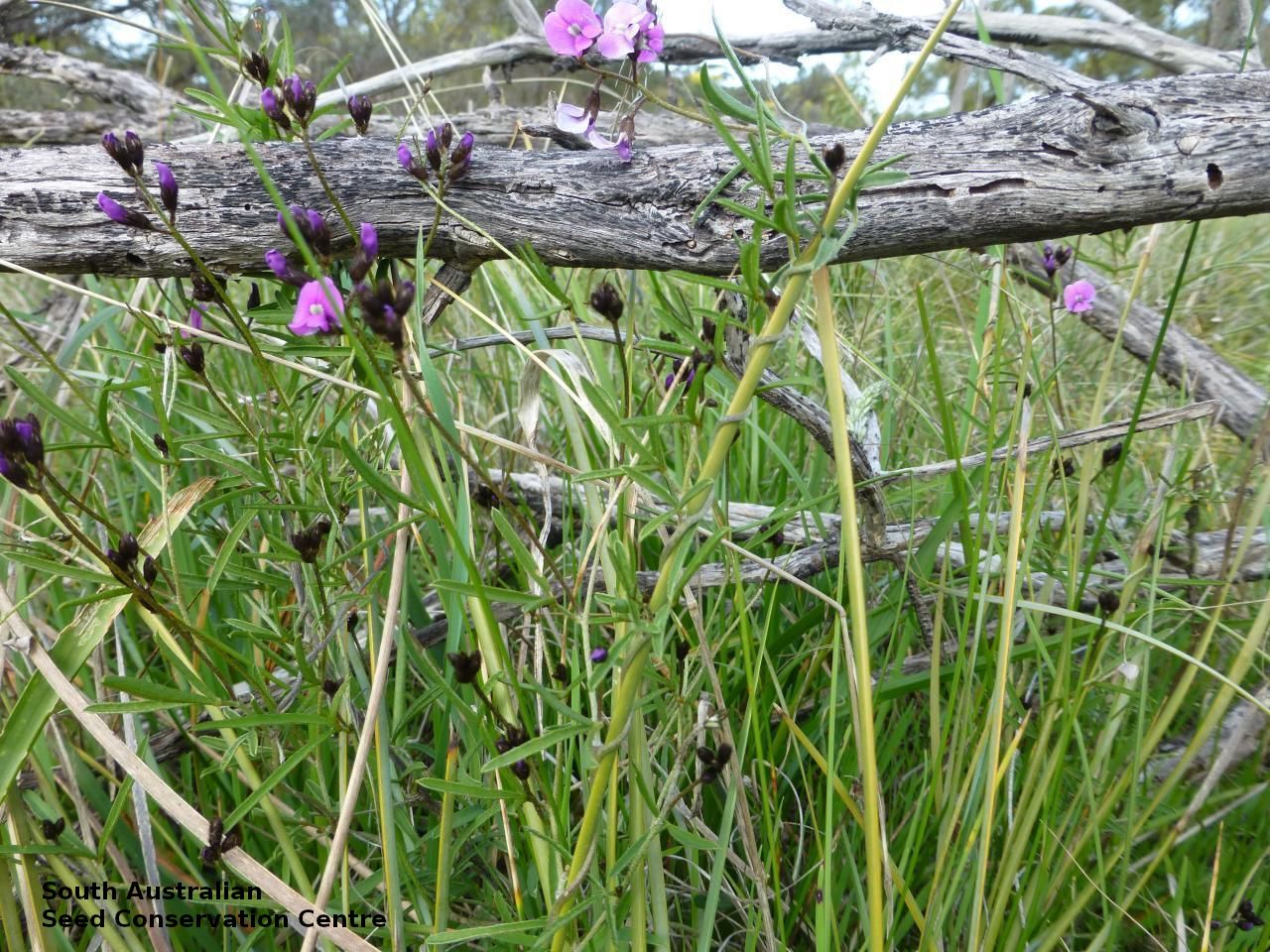
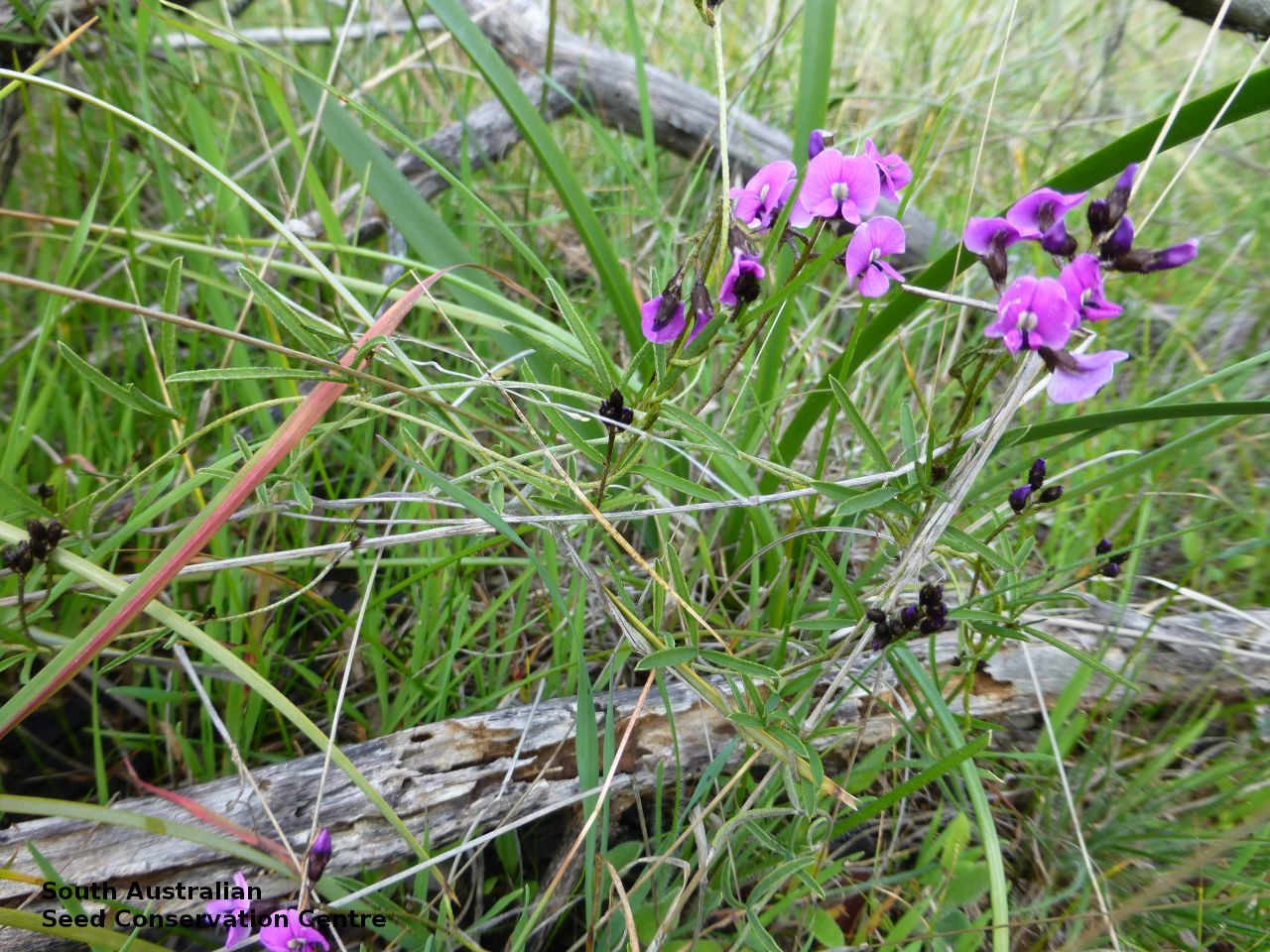
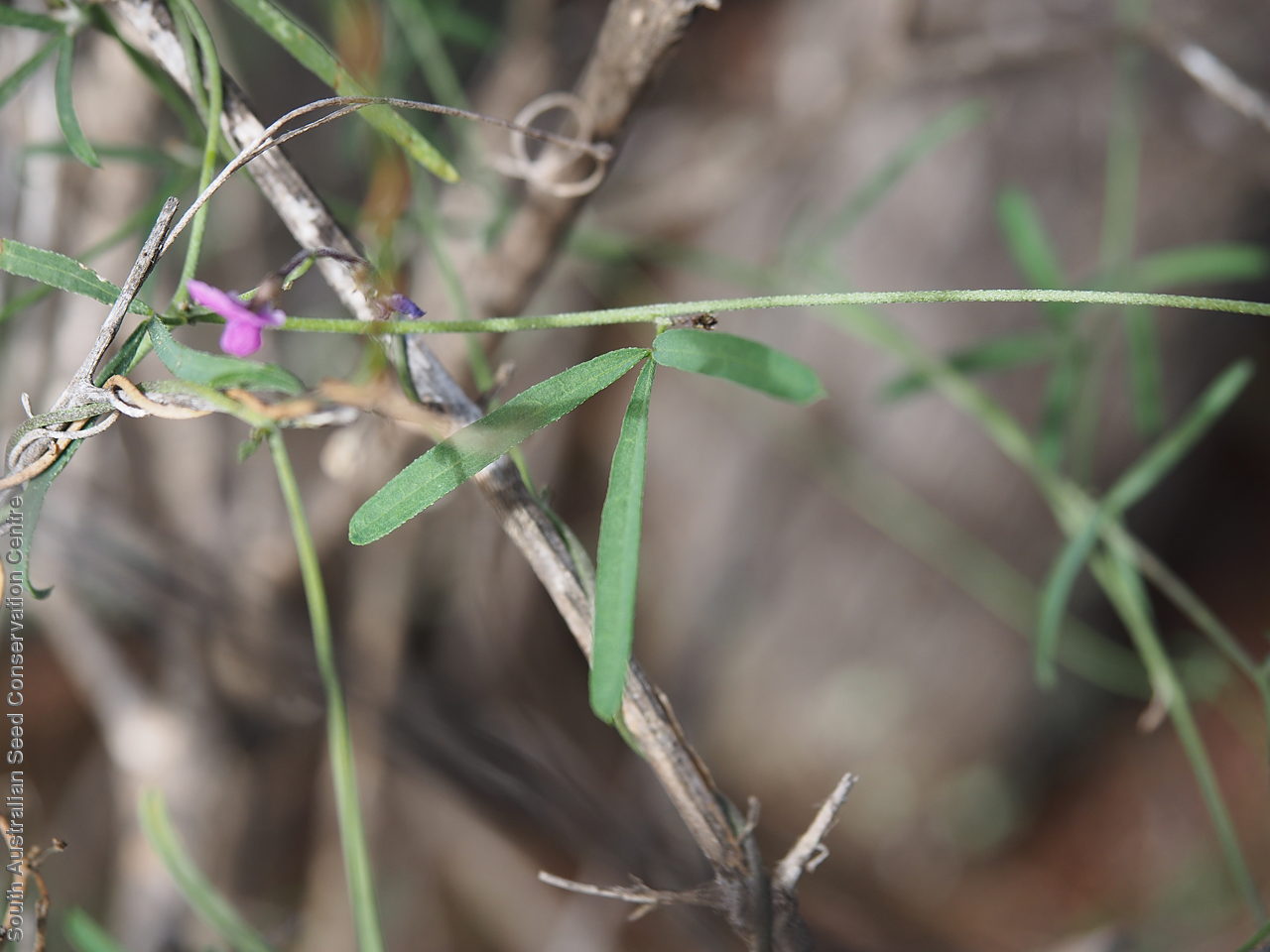
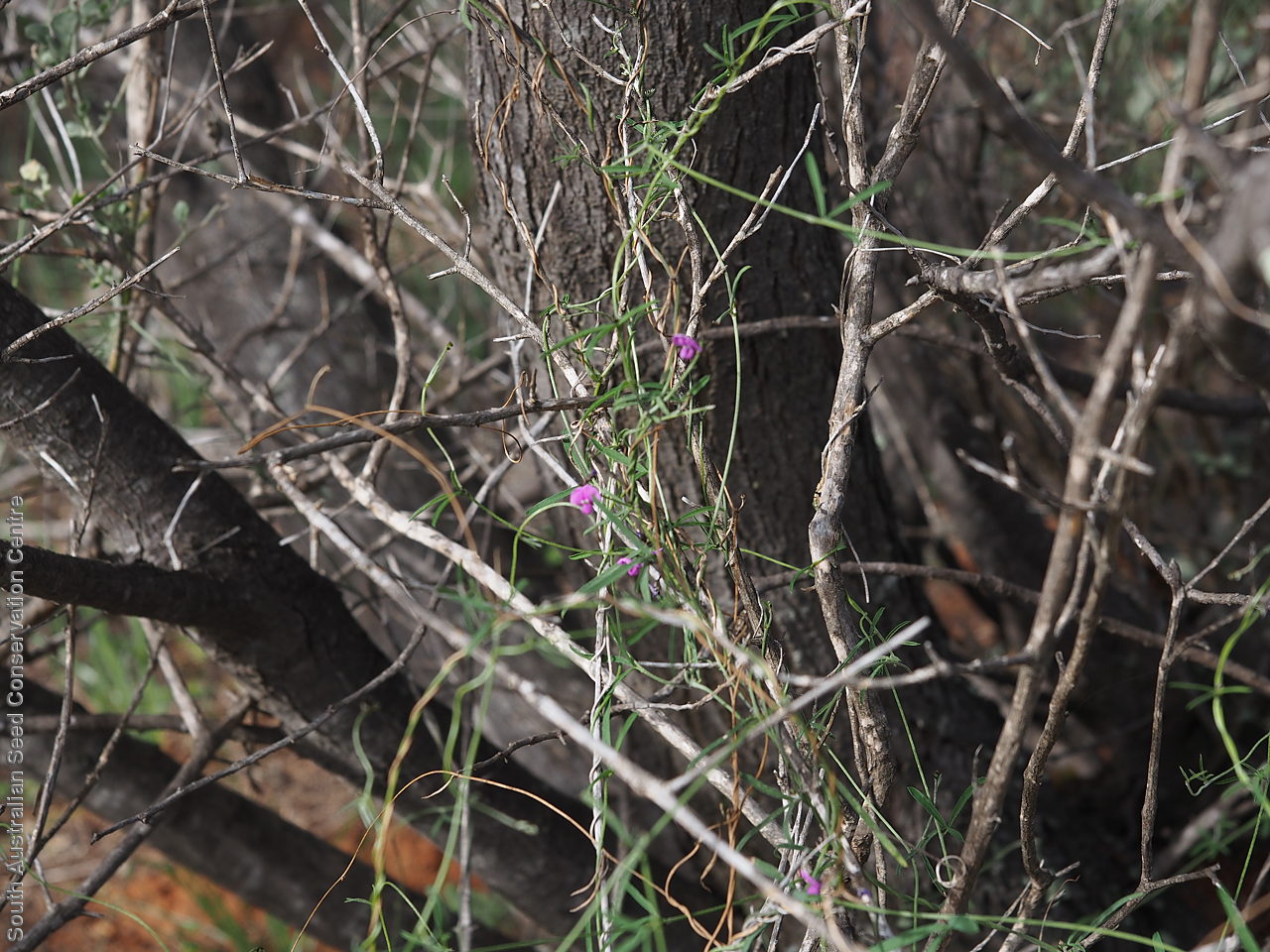
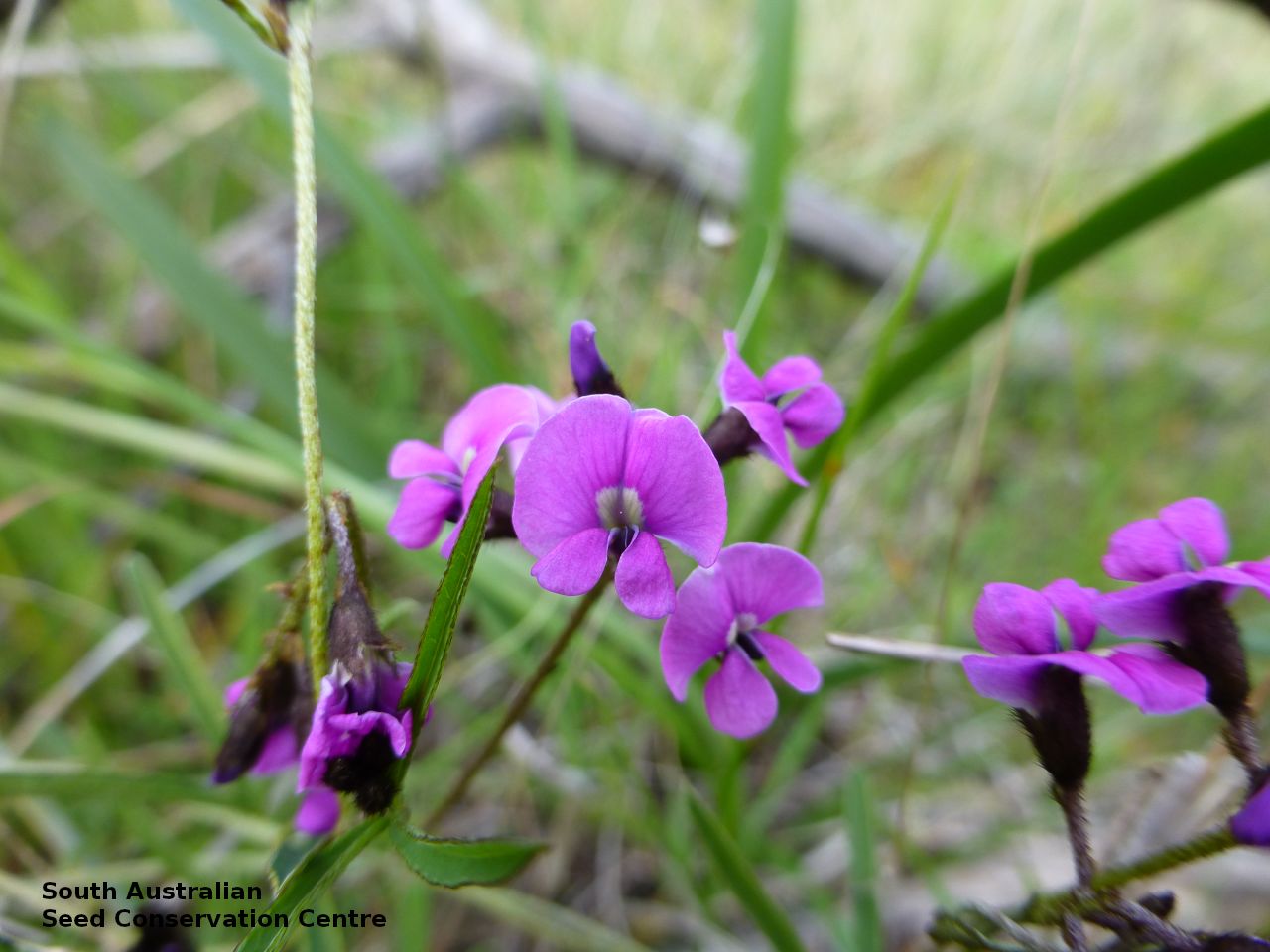
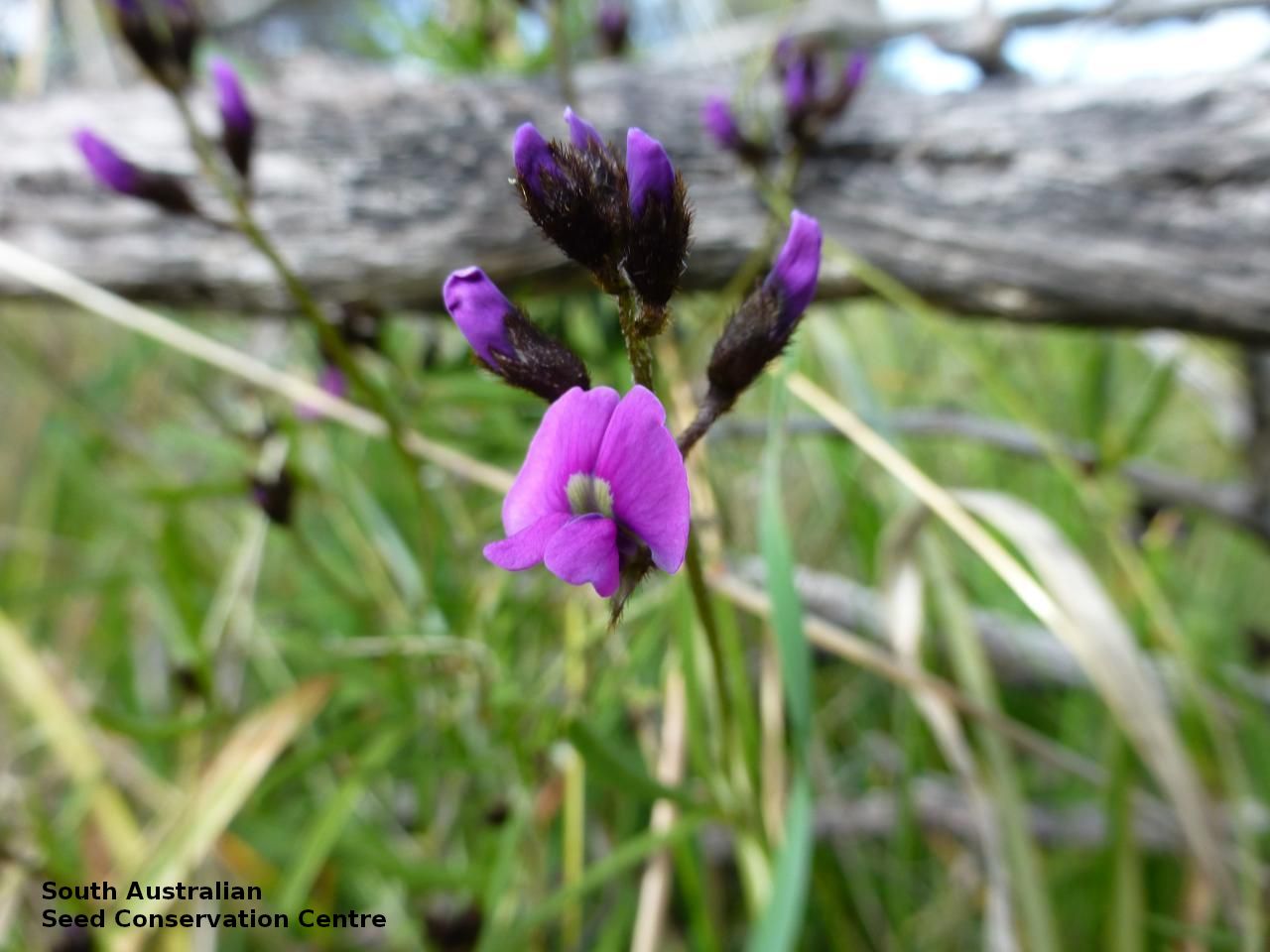
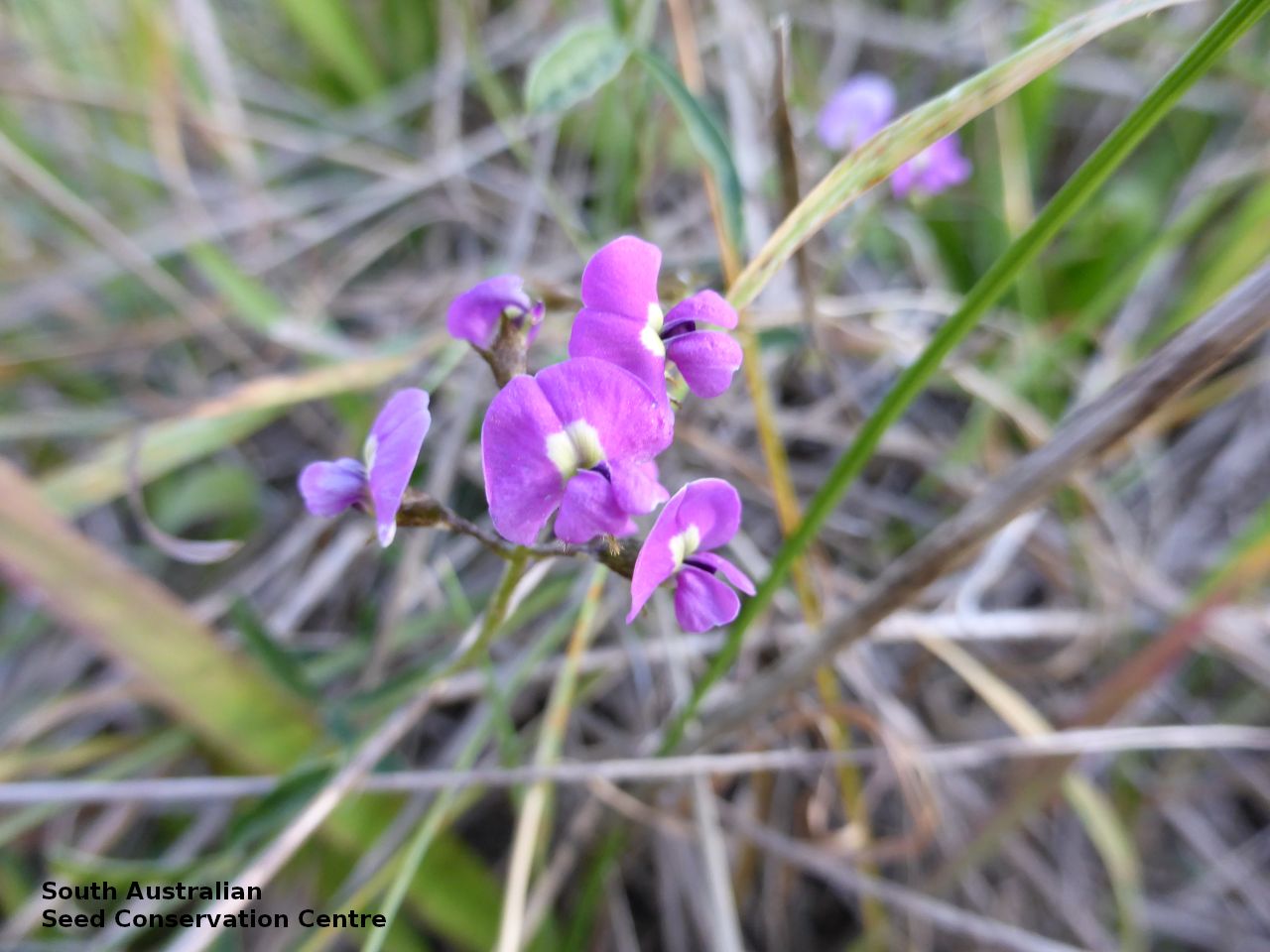
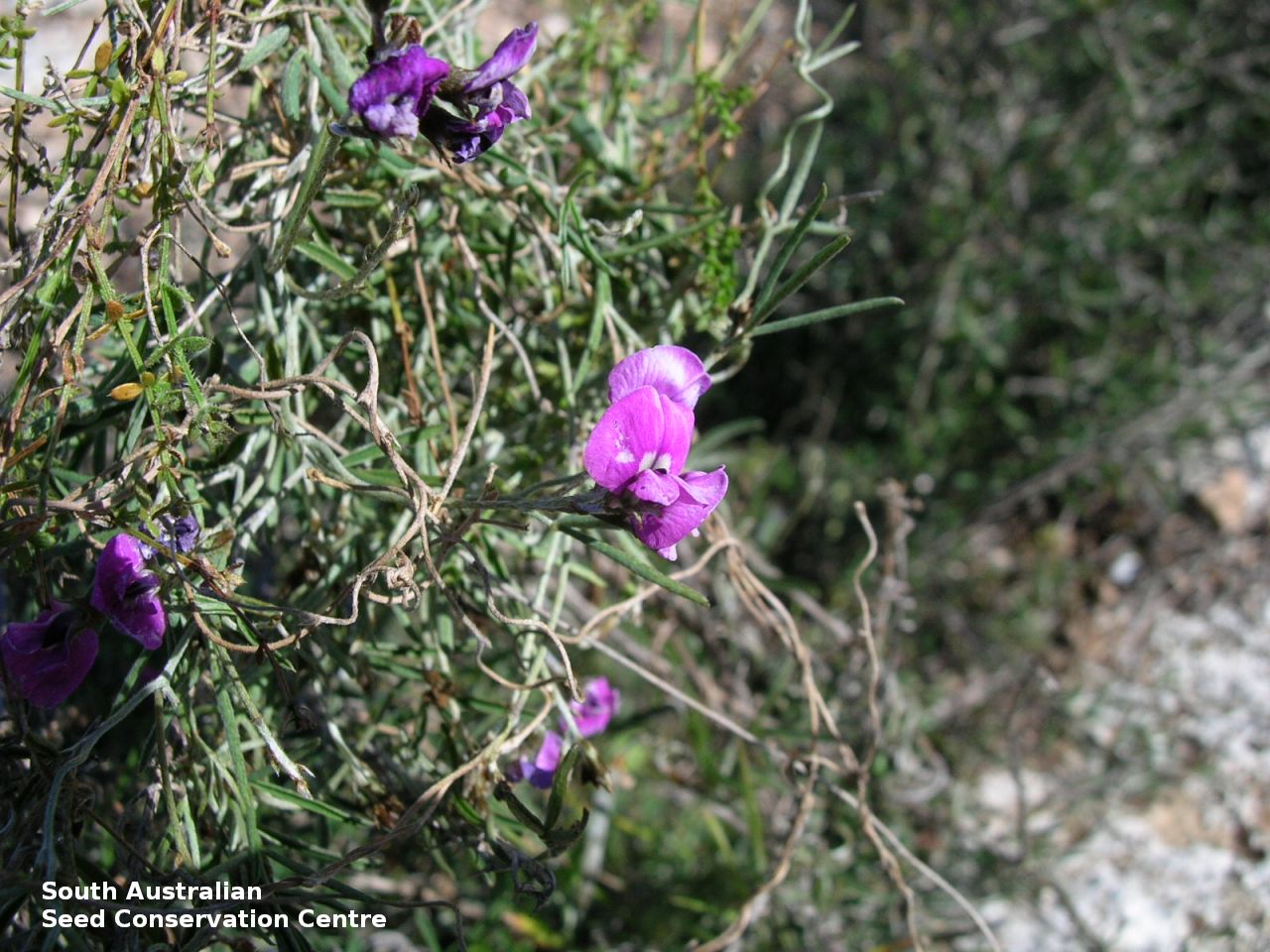
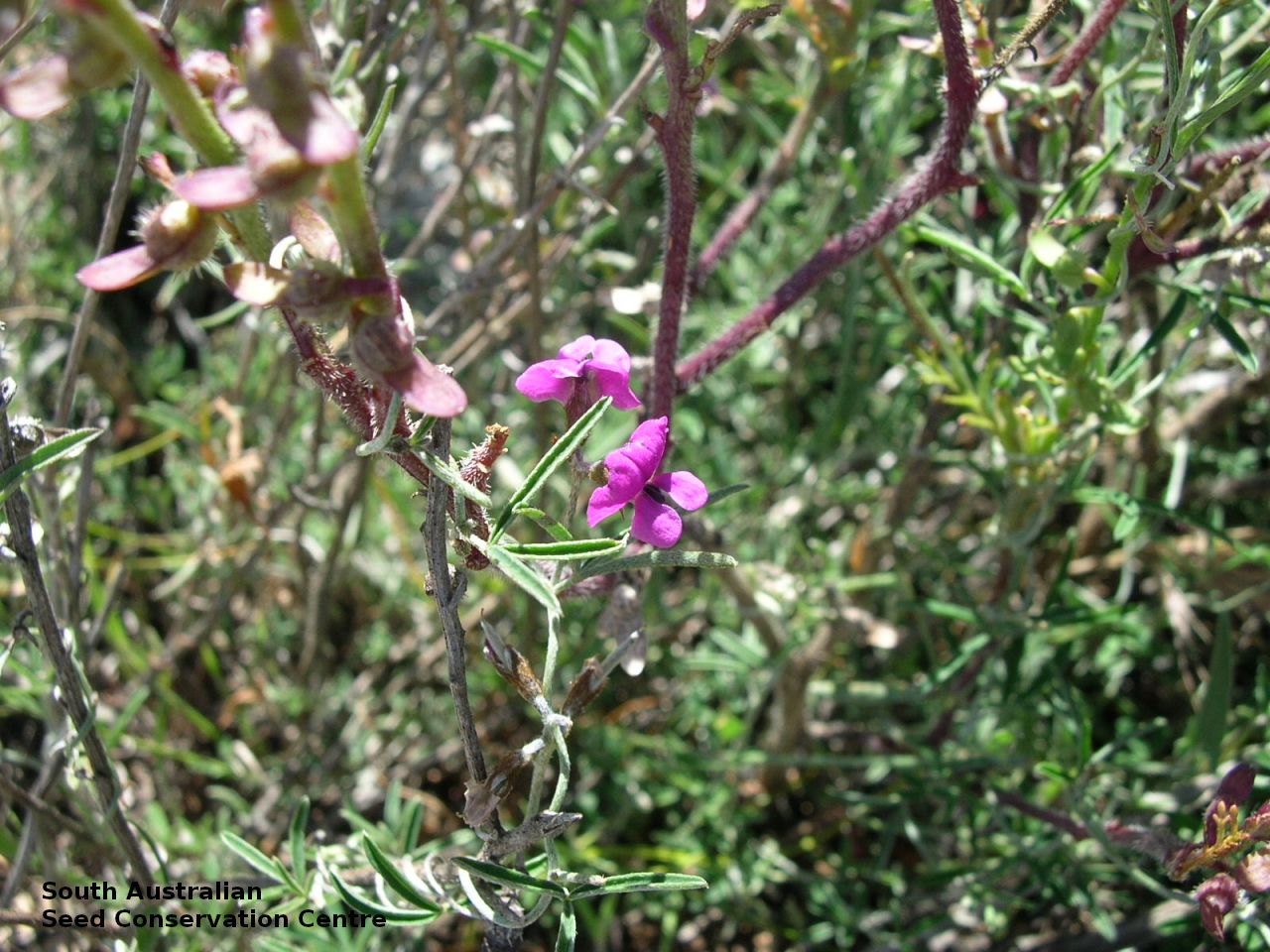
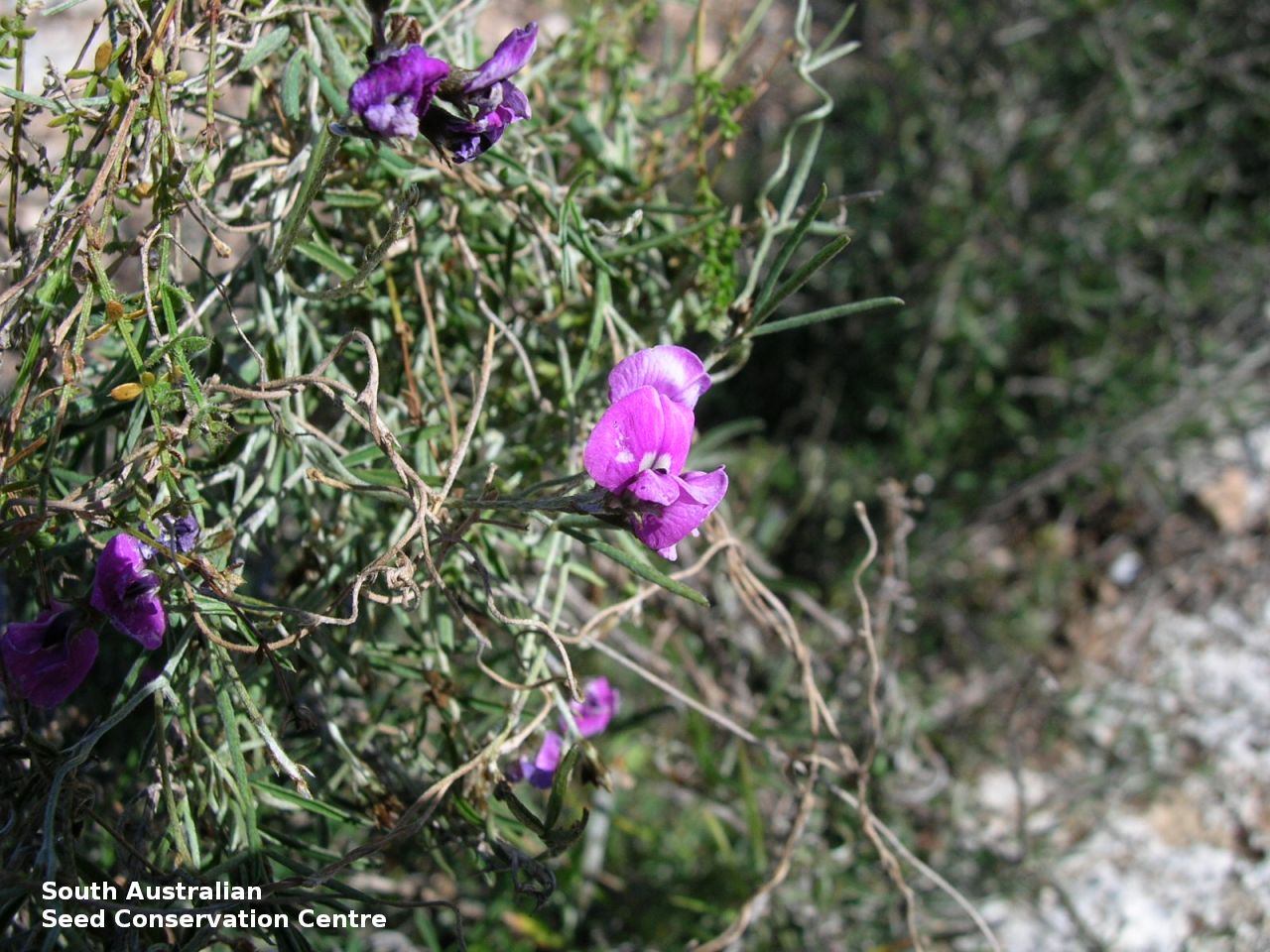
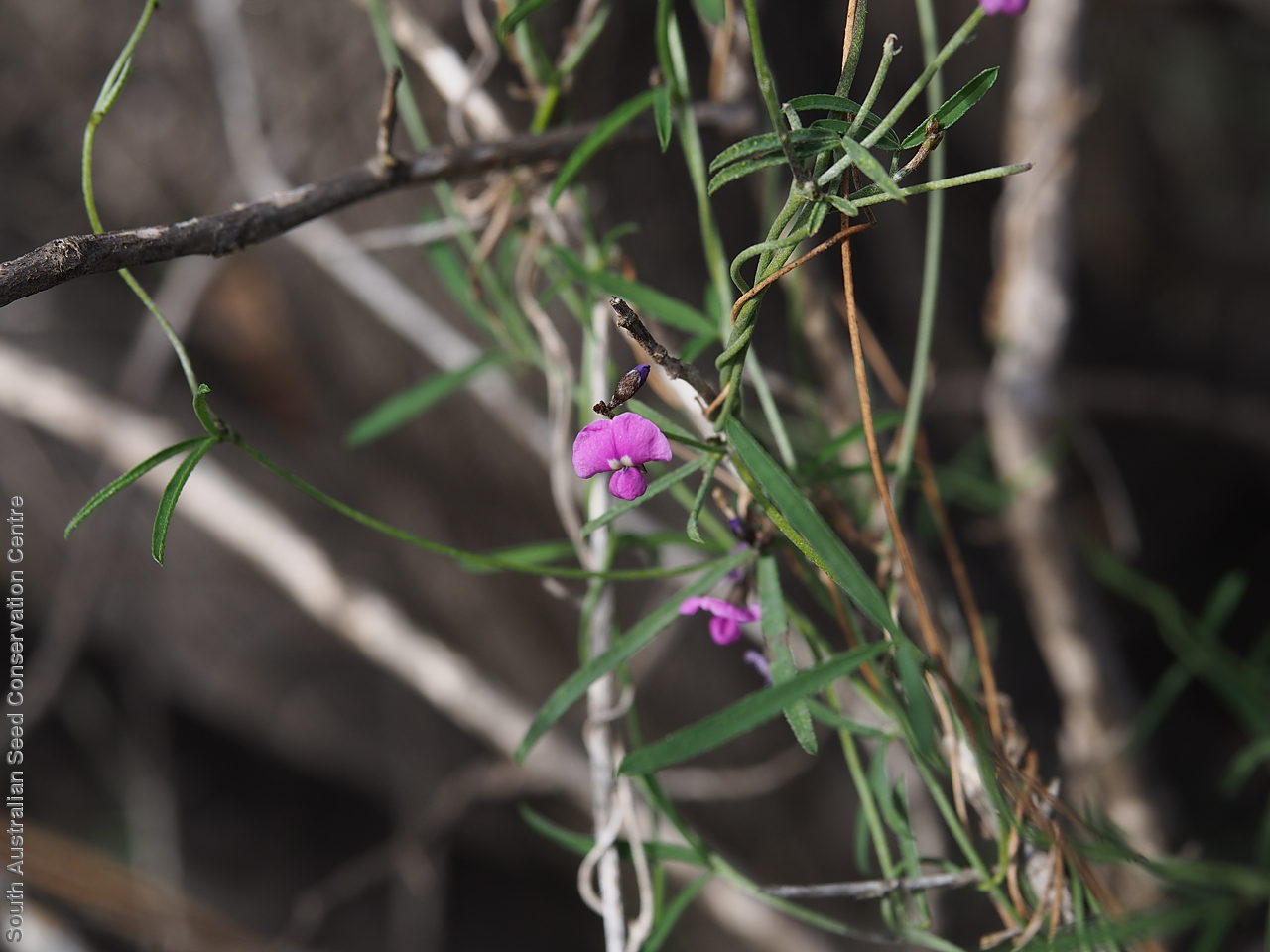
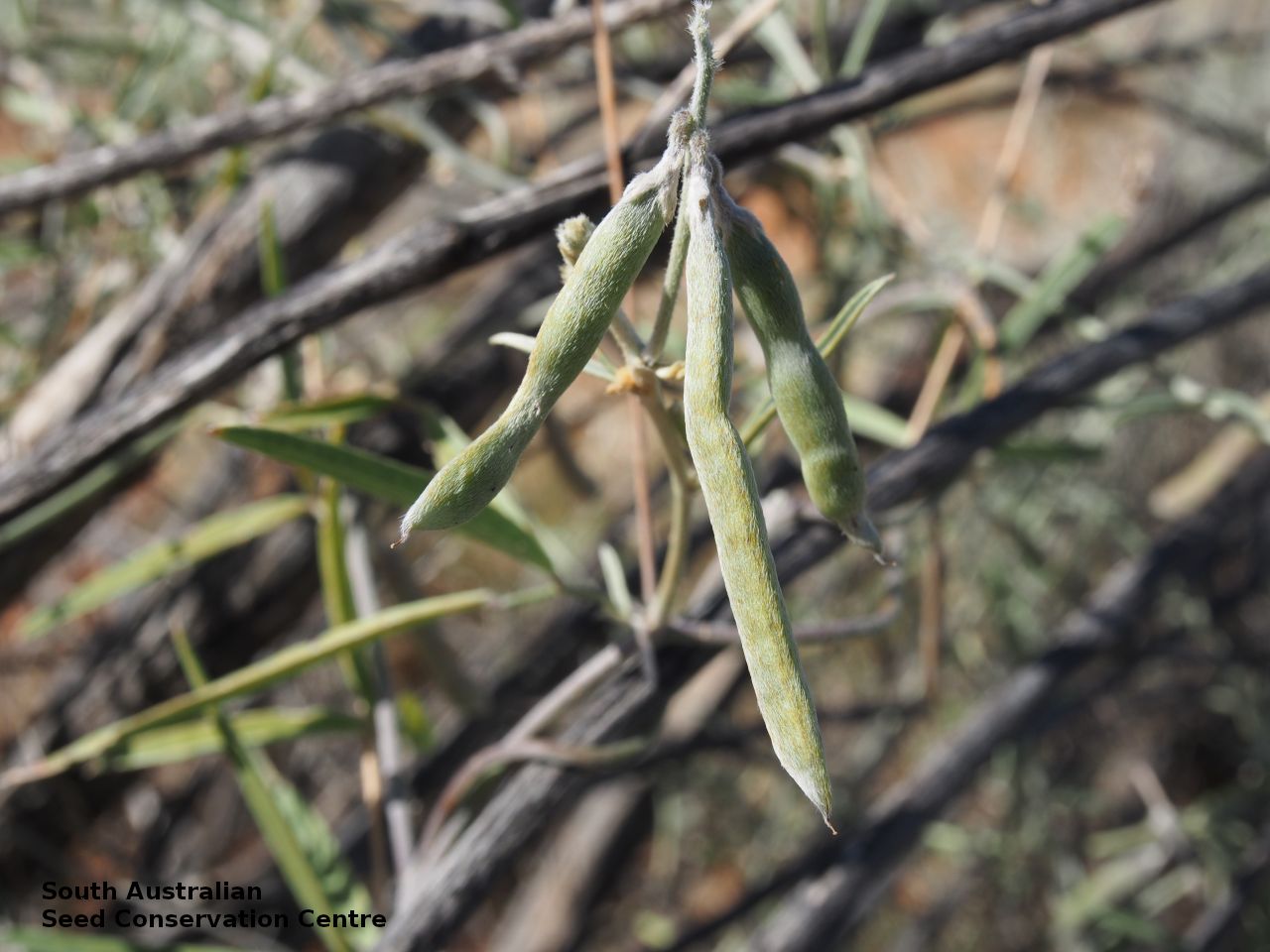
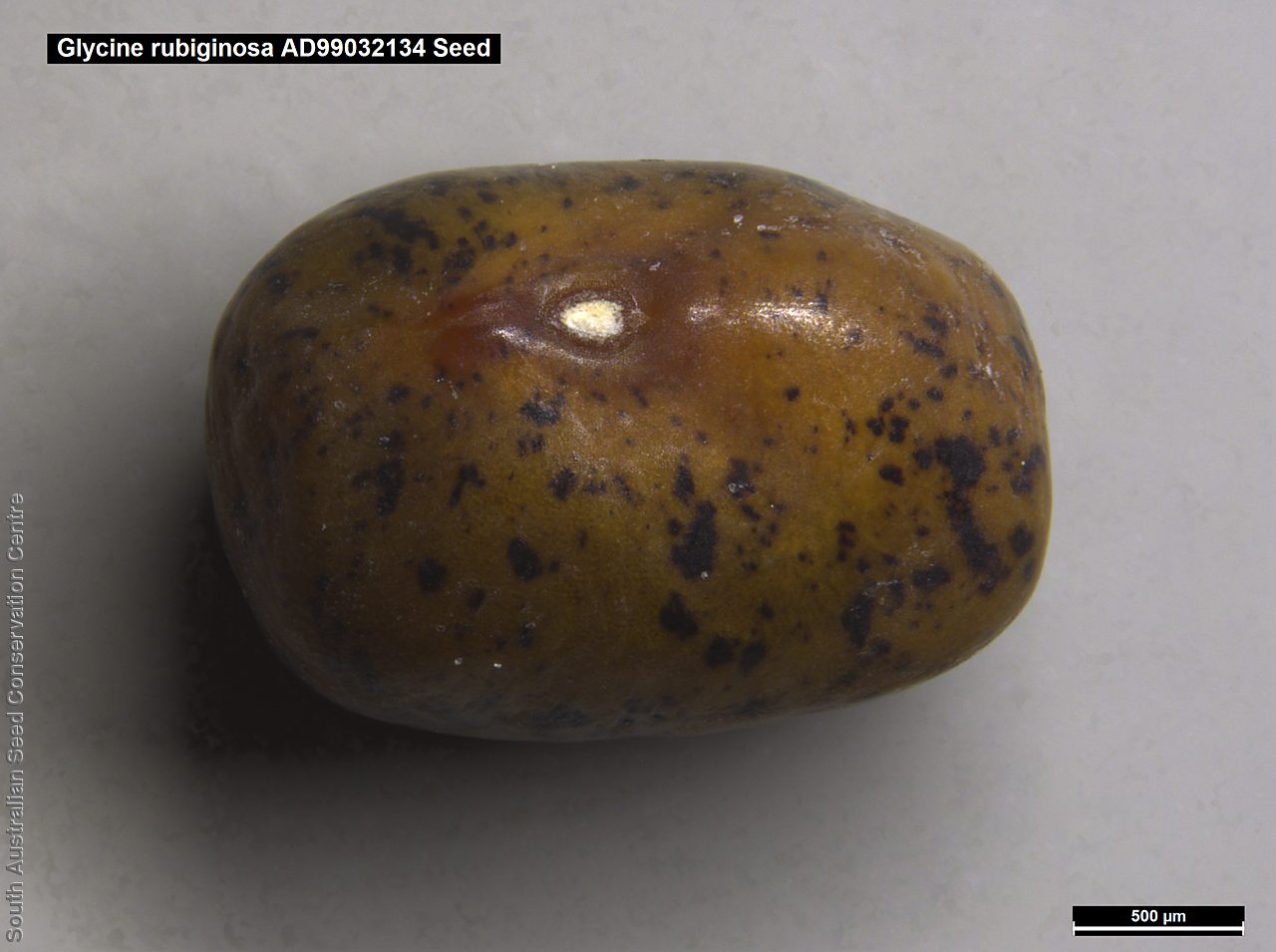
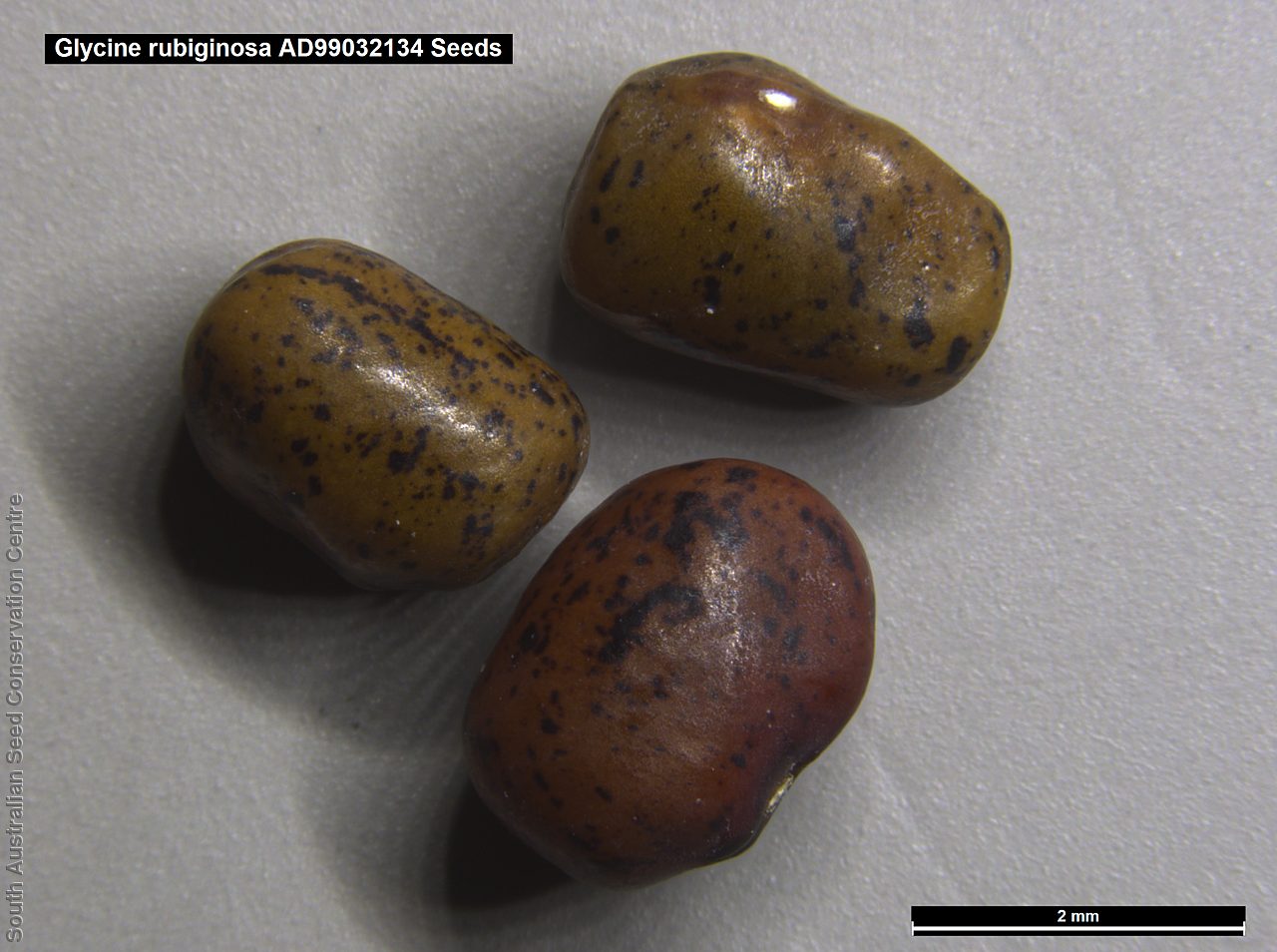
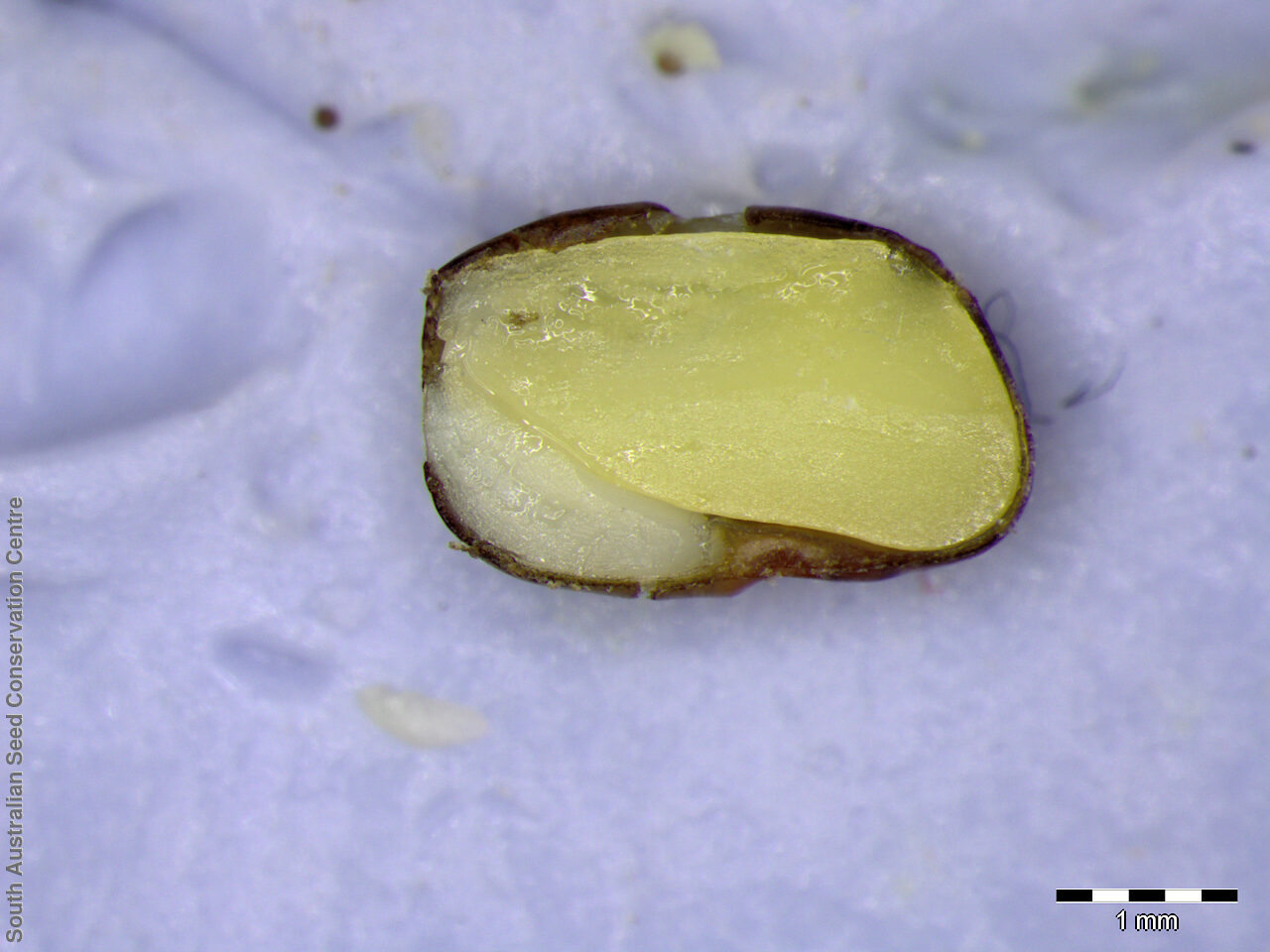
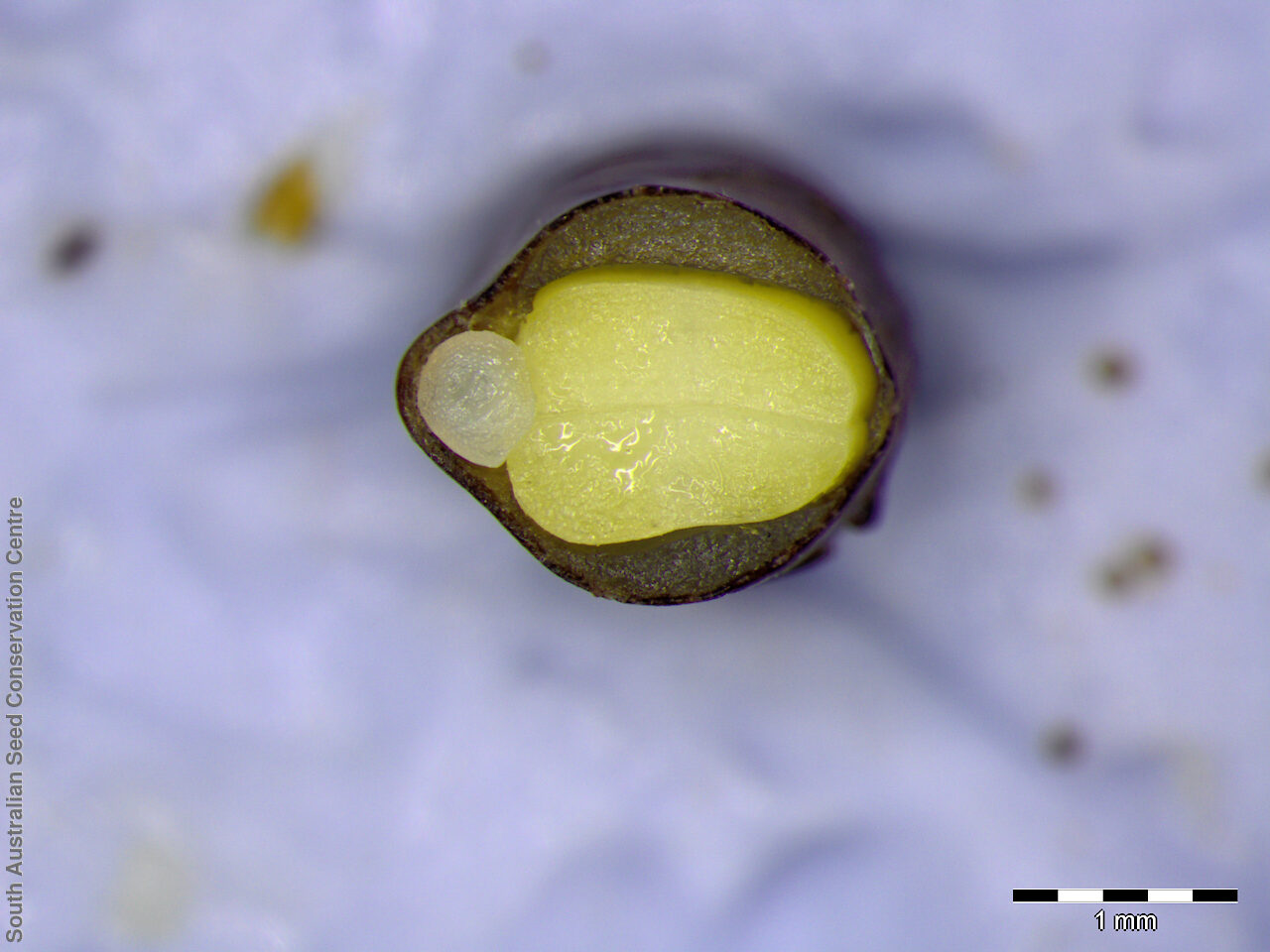

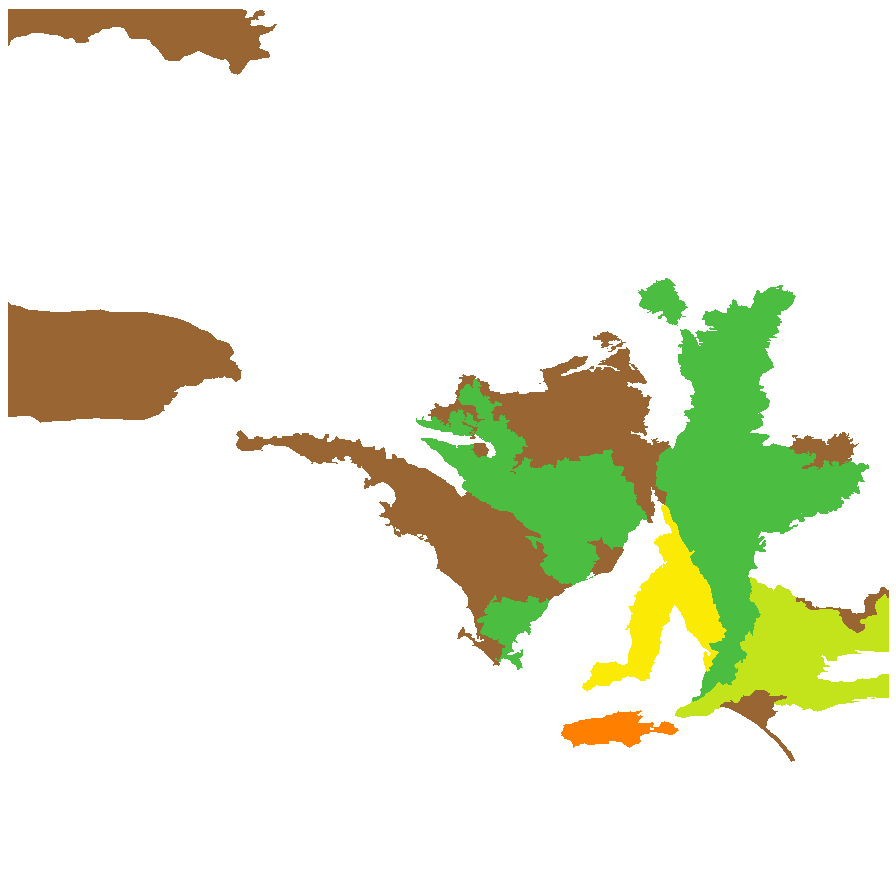
Botanical art
Prior names
Glycine clandestina
Glycine clandestina var. sericea, partly
Etymology
Glycine from the Greek 'glykys', meaning sweet, referring to the sweet roots and leaves of some species of the Glycine (soybean) genus. Rubiginosa from the Latin 'rubiginosus', meaning rusty-red, alluding to the calyx hairs.
Distribution and status
Found mainly in the central part of South Australia, with scattered occurrences in west; growing in grasslands and grassy woodlands. Also found in Western Australia, Northern Territory and New South Wales. Native. Common in South Australia. Rare in the other States.
Herbarium regions: North Western, Nullarbor, Gairdner-Torrens, Flinders Ranges, Eastern, Eyre Peninsula, Northern Lofty, Murray, Yorke Peninsula, Southern Lofty, Kangaroo Island, South Eastern, Green Adelaide
NRM regions: Adelaide and Mount Lofty Ranges, Alinytjara Wilurara, Eyre Peninsula, Northern and Yorke, South Australian Arid Lands, South Australian Murray-Darling Basin, South East
AVH map: SA distribution map (external link)
Plant description
Perennial twining herb with non-stoloniferous stems covered in white to rusty hairs. Leaves digitately 3-foliate; leaflets sessile or subsessile; commonly oblong-lanceolate, but occasionally elliptic to broadly elliptic or linear, to 40 mm long and 10 mm wide; apex acuminate; upper surface glabrous; lower surface with sparse, appressed white to rusty hairs. Inflorescence a raceme to 12 cm long, with mauve to purple pea-flowers; calyx moderately to densely hairy, with dark brown hairs. Flowering between July and November. Fruits are brown linear to short-oblong pod to 30 mm long and 4 mm wide; margins slightly thickened, covered in white or rusty hairs. Seeds are smooth, olive-black with dark stripes to a dark brownish-red, ovoid to sub-orbicular seed to 2.5 mm and 1.5 mm wide. Seed embryo type is bent
Seed collection and propagation
Collect seeds between September and December. The pods of this pea change colour from pale green to a dark brown when mature. The seed pods twist and burst apart expelling the seeds when fully ripe so timing of seed collections is important. Monitor fruits closely, bag maturing fruits or place groundsheets under plants to catch seeds . Alternatively, the pods can be harvested close to maturity (when they turn brown) and fully dried in a warm area. Place the pods in a tray and cover with paper to prevent seeds popping out and leave to dry for a week. Then rub the dried pods to dislodge the seeds. Use a sieve to separate any unwanted material. Store the seeds with a desiccant such as dried silica beads or dry rice, in an air tight container in a cool and dry place. This species has physical dormancy that needs to be overcome for the seed to germinate (e.g. nicking or softening the seed coat). Germination 100%, seed scarified (chipped with scalpel), on 1% w/v agar, 8/16 dark/light, 15C/30C. See http://data.kew.org/sid
| Location | No. of seeds (weight grams) | Number of plants | Date collected | Collection number Collection location | Date stored | % Viability | Storage temperature |
|---|---|---|---|---|---|---|---|
| MSB | 2,500 (11.33 g) | 40-50 | 19-Nov-2005 | MKJ145 Murray | |||
| BGA | 2,100 (8.1 g) | 50+ | 2-Dec-2010 | Kanmantoo Murray | 1-Jan-2012 | 90% | -18°C |
Number of plants: This is the number of plants from which the seeds were collected.
Collection location: The Herbarium of South Australia's region name.
% Viability: Percentage of filled healthy seeds determined by a cut test or x-ray.